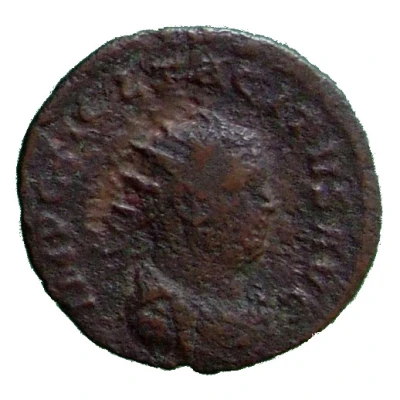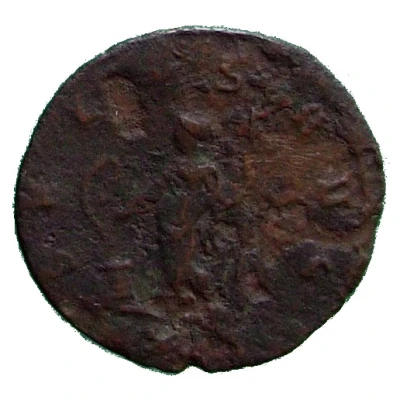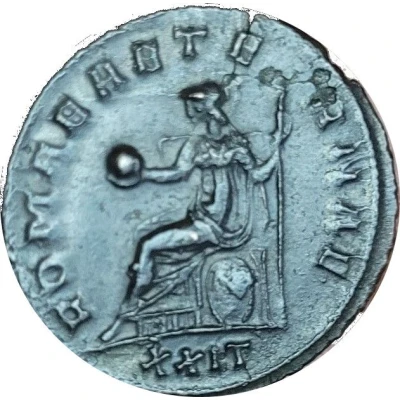


© Institute of Classics/University of Graz
Antoninianus - Tacitus SALVS AVG; Salus
| Silver | 2.4 g | - |
| Issuer | Rome › Roman Empire (27 BC - 395 AD) |
|---|---|
| Emperor | Tacitus (Marcus Claudius Tacitus) (275-276) |
| Type | Standard circulation coin |
| Years | 275-276 |
| Value | Antoninianus (1) |
| Currency | Antoninianus, Reform of Caracalla (AD 215 – 301) |
| Composition | Silver |
| Weight | 2.4 g |
| Shape | Round (irregular) |
| Technique | Hammered |
| Demonetized | Yes |
| Updated | 2024-10-05 |
| Numista | N#291824 |
|---|---|
| Rarity index | 100% |
Reverse
Salus, draped, standing left, feeding out of patera in right hand serpent rising from altar.
Script: Latin
Lettering:
SALVS AVG
-/P//XXI
Translation:
Salus Augusti.
Health of the emperor (Augustus).
Comment
Example of this type:Institute of Classics/University of Graz
Source:
Online Coins of the Roman Empire (OCRE)
Interesting fact
The Antoninianus coin was introduced by the Roman Emperor Tacitus in 275-276 AD, during a time of economic crisis and inflation. The coin was made of silver, but its value was not based on the metal's intrinsic value, but rather on the Roman government's guarantee of its value. This made it a fiat currency, similar to modern-day paper money, and it allowed the Roman government to finance its military campaigns and public works projects. The coin's design featured the image of the goddess Salus (Salvation) on one side, and the emperor Tacitus on the other, symbolizing the Roman government's commitment to protecting and preserving the empire. Despite its introduction during a time of economic instability, the Antoninianus coin remained in circulation for over a century, until the fall of the Roman Empire in 395 AD.

